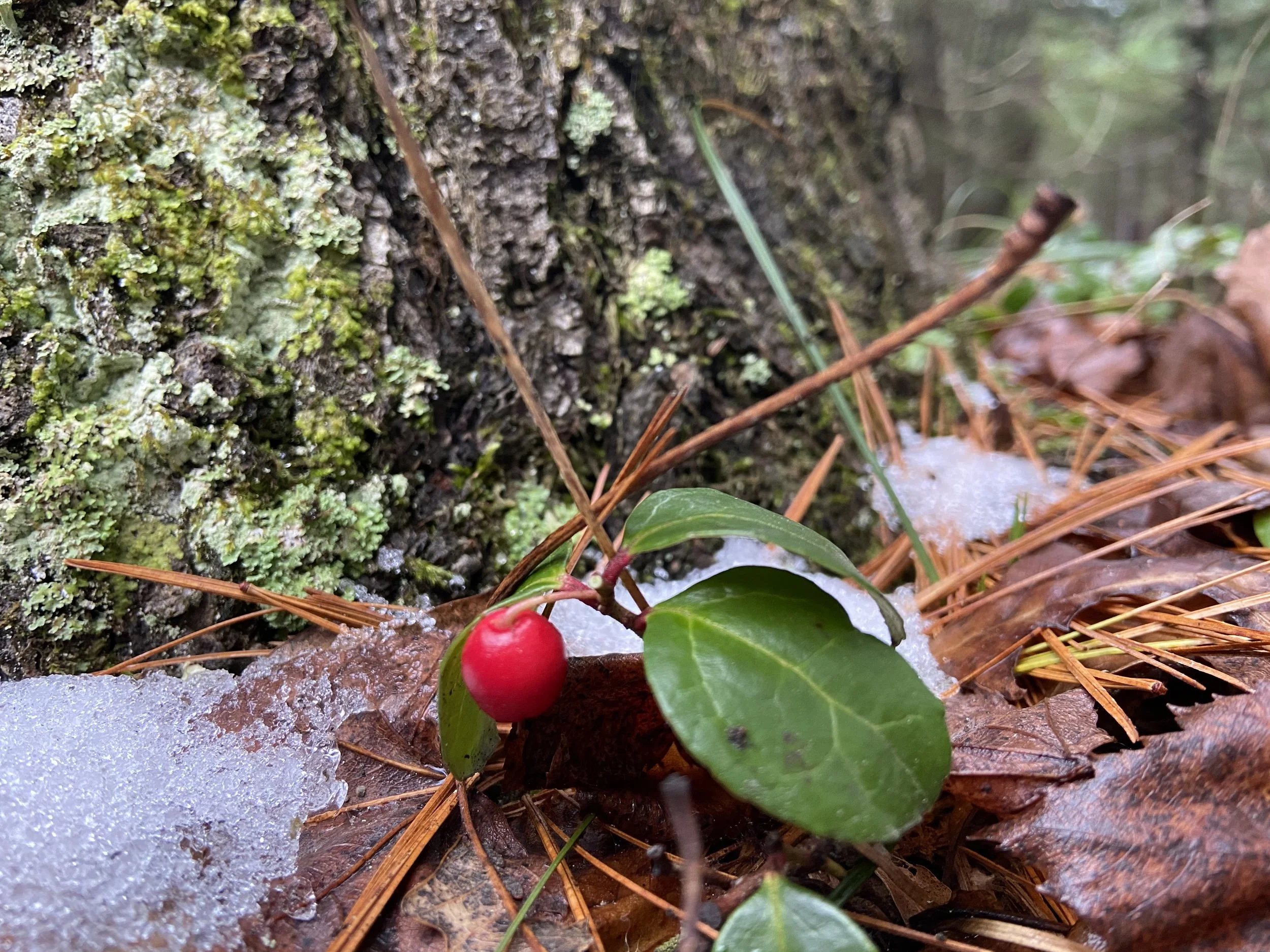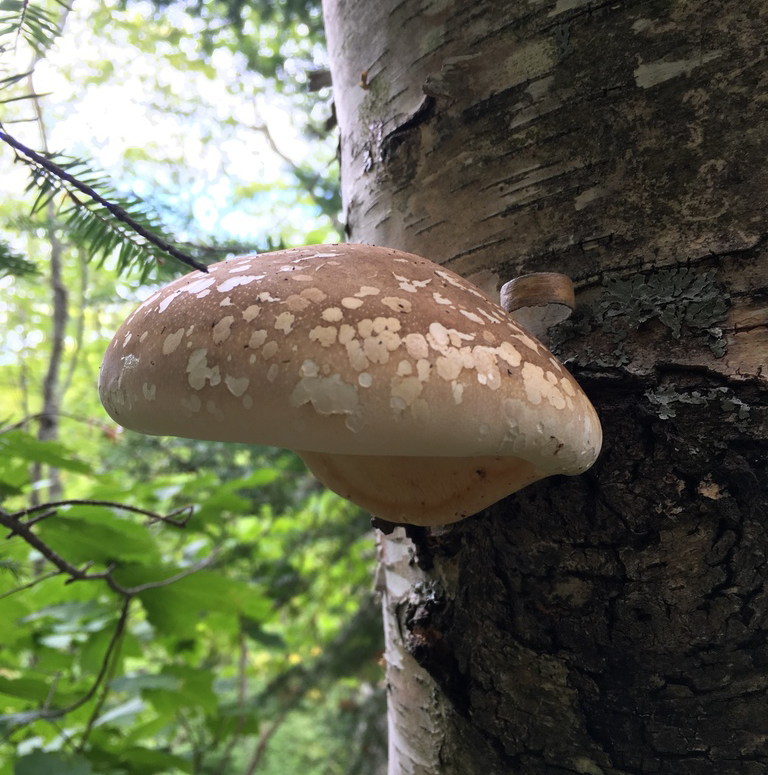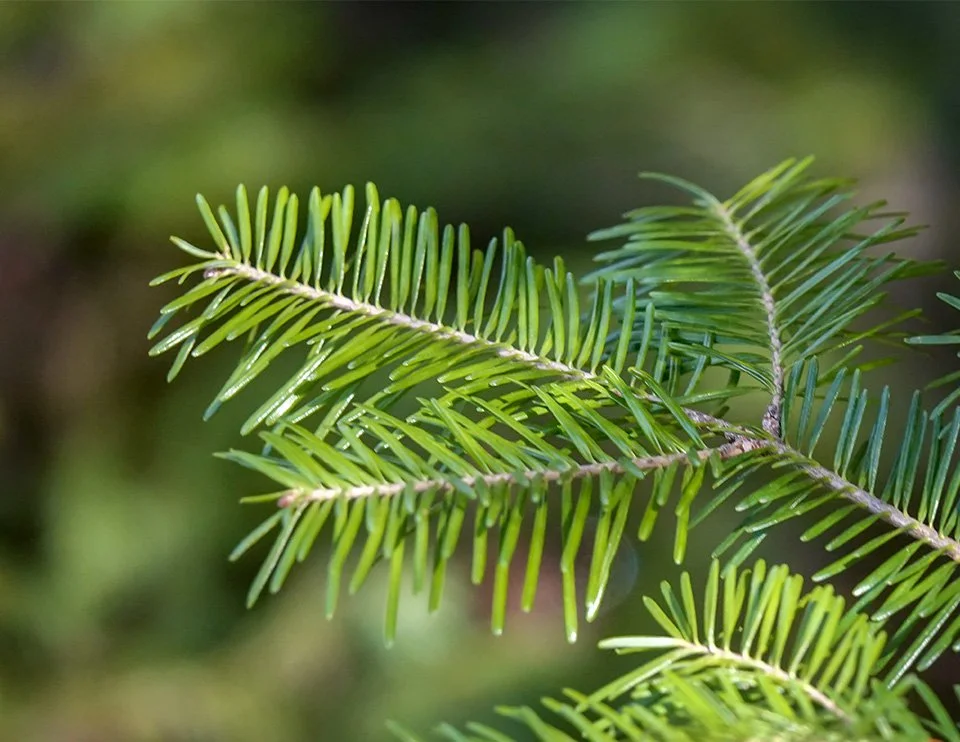Winter is here and it is time you got something wild into your digestive tract! Most Foragers simply give up when the snow hits the ground, but I don’t think you need to do that and you may just feel healthier if you find some of these delicious plants this winter! Here are my favorite 3 Winter Wild Edibles!
Wintergreen-Gaultheria procumbens
If only we could smell this through the snow like deer!
This evergreen delight can be found at any time of the year. Wintergreen is chock full of Methyl salicylate, a compound that is eerily similar to aspirin. This little plant, barely reaching 3 inches in height, grows in dense patches which form from the spread of its underground rhizomes. I like to chew on the leaves while I am out and about on winter hikes or hunting. In my opinion the flavor does not carry over that well into tea, so we do not usually make tea with this plant. But the fresh breath imparted by this plant could put any mainstream chewing gum to shame.
Finding Wintergreen under the snow can pose a challenge if you have never looked for this plant before. Because I spend so much time out in the woods I often know exactly where to brush the snow aside in order to get to these tasty leaves and berries! My suggestion to you would be to find a forest near you (assuming you are in this plants native range) with its favorite associates, which include but are not limited to, Pines, Birches, Balsam Fir, Hemlock, Aspen, and Oaks. If you are feeling particularly adventurous just start moving snow aside in random places and you will potentially hit the jackpot! If not then make sure you find some in the warmer weather and mark your spots with sticks you’ll recognize or the new fangled way with your handheld supercomputer!
Birch Polypore-Fomitopsis betulina
Disgustingly healthy mushroom.
If you have Birch trees in your area the chances that you have this fungal friend around are nearly 100%. Birch Polypore, as it is stated in its name is a polypore mushroom which means that instead of the classical gills elicited in the mind when thinking ‘mushroom’ this mushroom has microscopic holes all throughout the underside. Look for Birch trees that appear to have hamburger buns all over them. They are so plentiful, and are often white (you do not want discolored or moldy) well into winter. These mushrooms contain a lot of compounds that really enhance our health if we use them.
The top of the benefits in my opinion is that Birch Polypore appears to contain ingredients that cause your body to enhance secretion of interleukin-8 which promotes immune cell growth. On top of that it can also increase the release of interferon-gamma, which is a cytokine that helps the immune system kick out nasty invaders. Don’t let my words convince you alone, as this mushroom has been studied by scientists and at least one peer reviewed study had this to say about it:
“Modern research confirms the health-promoting benefits of F. betulina. Pharmacological studies have provided evidence supporting the antibacterial, anti-parasitic, antiviral, anti-inflammatory, anticancer, neuroprotective, and immunomodulating activities of F. betulina preparations. Biologically active compounds such as triterpenoids have been isolated. The mushroom is also a reservoir of valuable enzymes and other substances…. In conclusion, F. betulina can be considered as a promising source for the development of new products for healthcare and other biotechnological uses.”
In our household Birch Polypore is cut thin and dried. Throughout the winter months every time we make bone broth or soup stock we add some of our dried Birch Polypore to the pot. While the flavor can be said to be quite repulsive alone, hidden in a soup we get the health benefits without the taste that typically accompanies it. You need this mushroom this winter! Even Otzi the Iceman was carrying some on his person when he died thousands of years ago!
Balsam Fir- Abies balsamea
Top of my charts on good smells
If you have this tree in your vicinity then you never need a vitamin C supplement again! Among the evergreen tree species that contain Vitamin C this one has the highest amount of them all. Just 100 grams of Balsam Fir needles supplies a hefty 270 milligrams of Vitamin C. One hundred grams of orange supplies a measly 53 milligrams. That is over 5 times the dose of this essential vitamin from something which is entirely ubiquitous throughout large portions of the northeast and much of Canada.
This tree is listed as a species of least concern on the IUCN and as such it is entirely possible for you to harvest the needles a few times a week throughout the winter months (assuming you have access to trees you have permission to harvest from) and not cause the population to decrease substantially. Balsam trees are notoriously good smelling. I would rank them as “Best Smelling Tree” as I am positive many other woodsmen and foragers would as well. The taste of this tea is excellent to say the least. Just grab a handful of these aromatic needles the next time you have the opportunity and lightly simmer for 10-15 minutes in a quart of water, add a little raw, local honey if you fancy and enjoy!
Winter Foraging Class on March 5th
If you find the subject of Winter Foraging fascinating and you would like to join me for a Winter plant walk where we will discuss many more species than are discussed in this blog click here to sign up. Early March is still technically Winter and it is cold, but it is typically not that cold usually being in the high 20’s and low 30’s which feels downright tropical compared to the single digits. Join us and get your family outside and enjoy a plethora of teas and foods made with local wild edibles!
If you don’t already have a pair, make your winters more enjoyable and get a pair! And the best part about the link below is that you can support me and my foraging cause by clicking the link below and doing your normal shopping. Amazon gives me a percent of everything you buy and it does not cost you a thing!
Thank you for reading this Blog!




